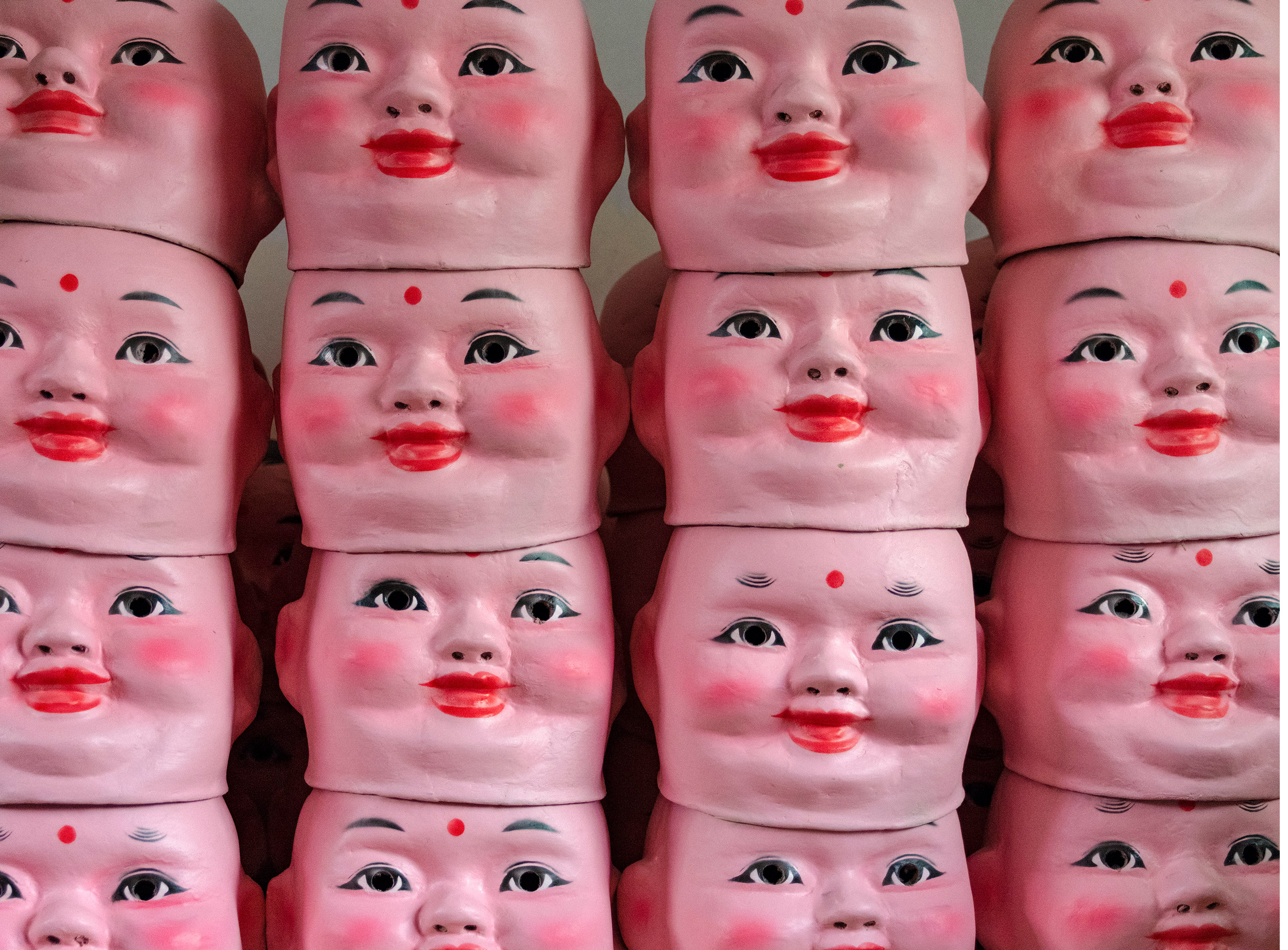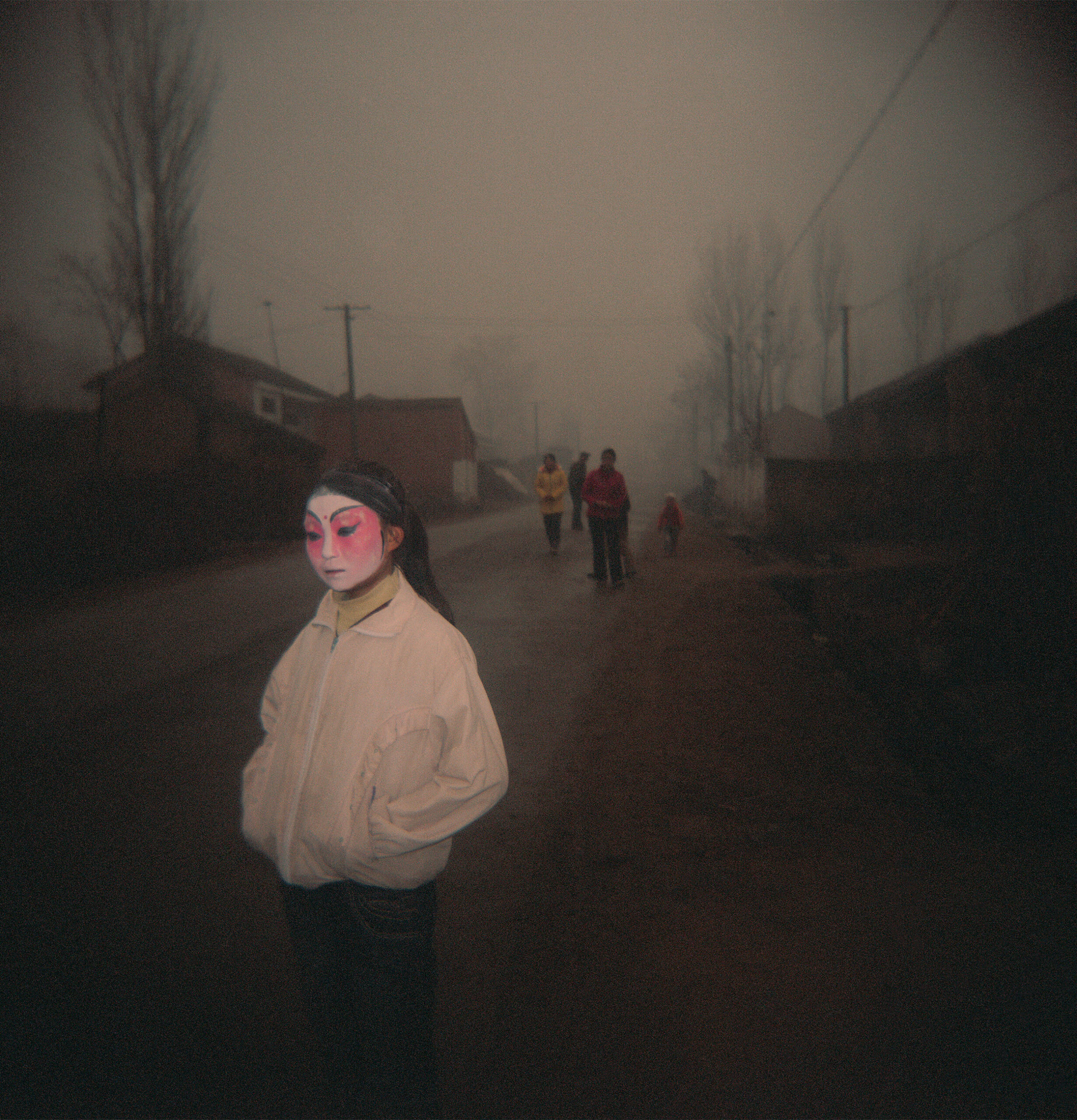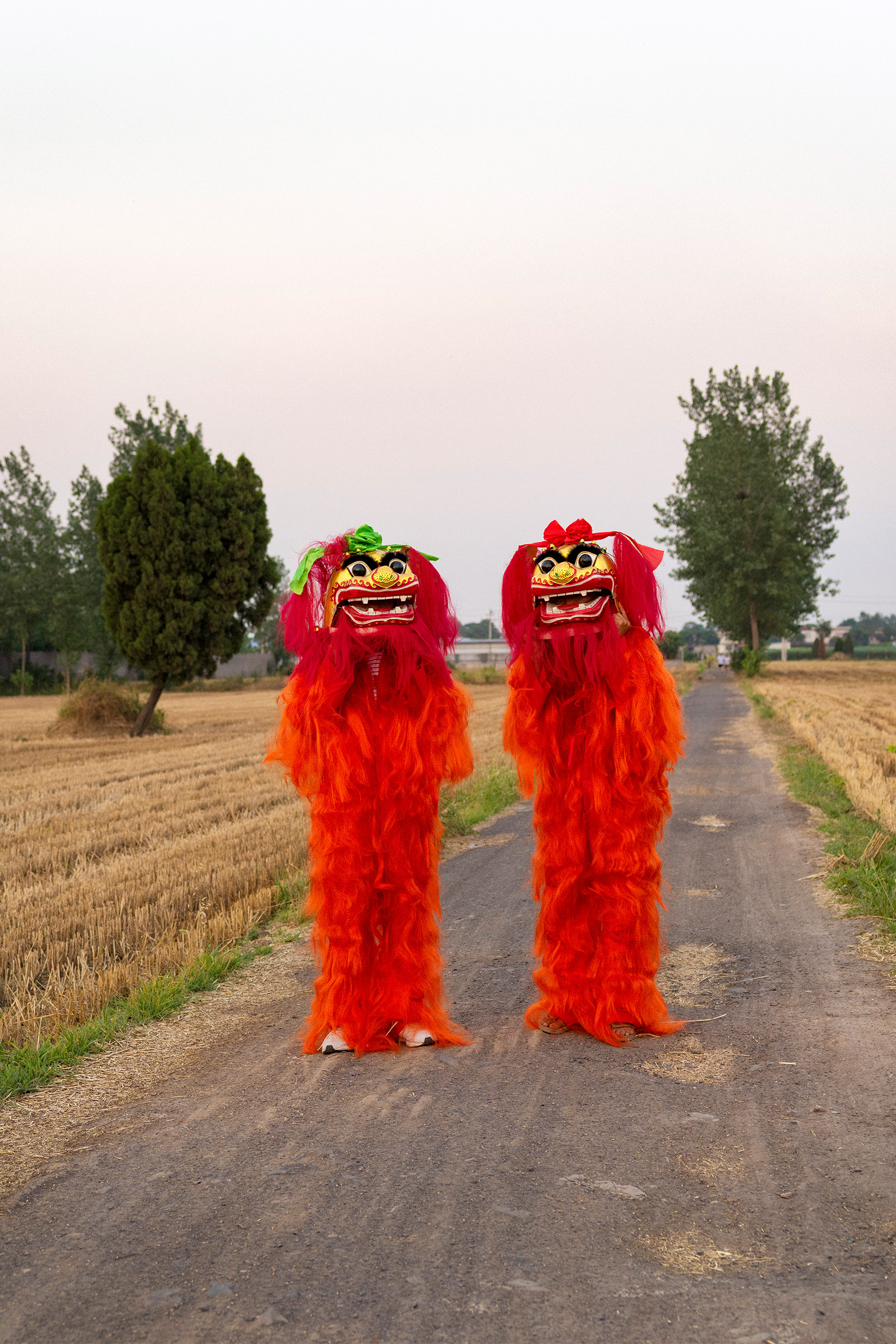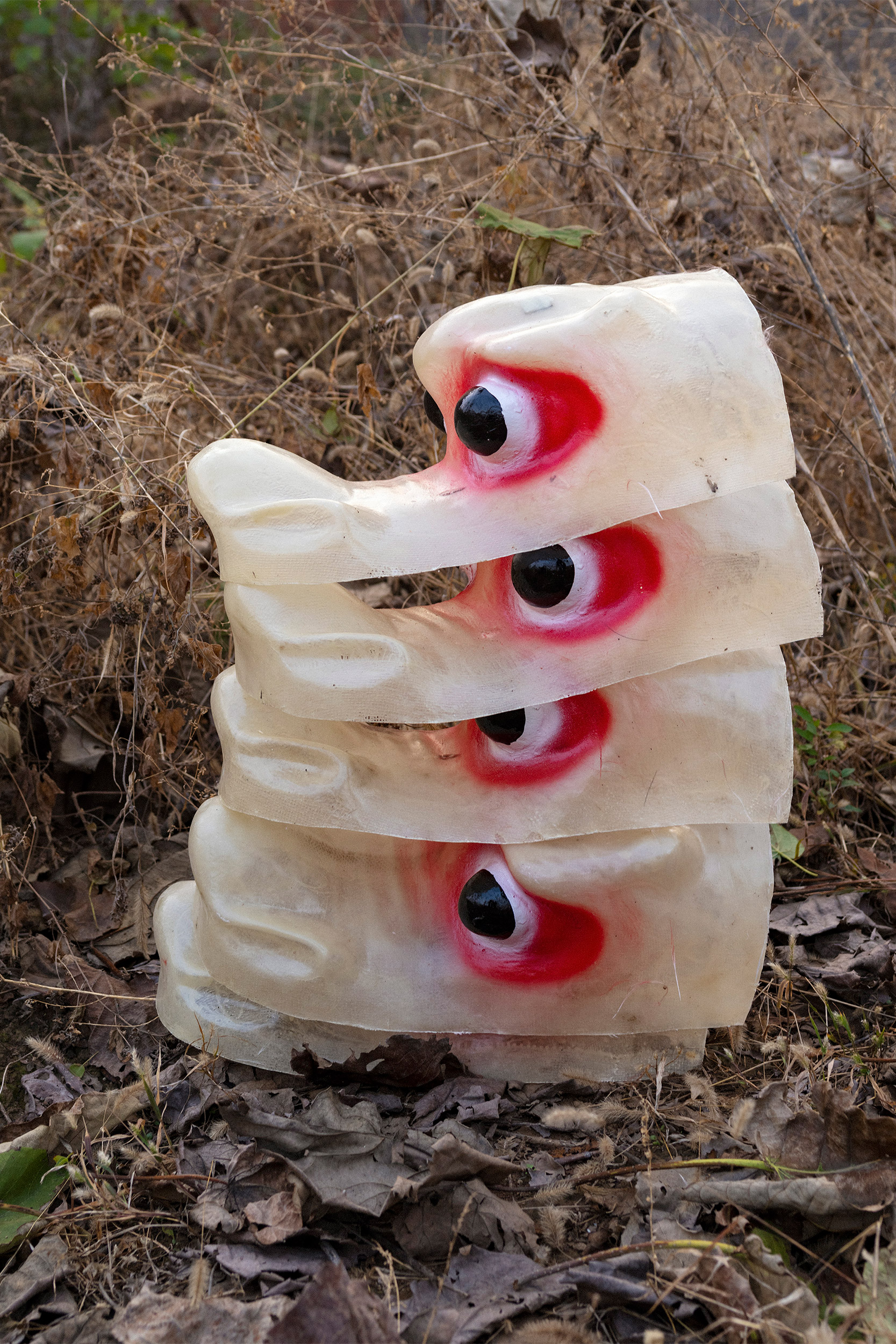
Detail from Zhang Xiao’s photo of boy doll head props for yangko folk dance, Huozhuang Village, Henan Province.
Photos by Zhang Xiao
Changing face of Shehuo festival
Photographer Zhang Xiao creates portrait of tradition making room for modernization
When Zhang Xiao began his exploration of the Shehuo festival in rural China in 2007, he created ethereal photographs of performers wearing elaborate makeup and costumes. Performers told him some of the meticulously crafted costumes had been passed down generation to generation from the time of the Qing Dynasty — which ended in 1912.
When he returned to the project in 2018, those heirlooms had been replaced by mass-produced products, sold on China’s popular e-commerce marketplace, Taobao.
Zhang documented the festival over a decade of modernization, creating a portrait of how traditional practices sustain themselves amid rapid change.
As the 11th recipient of the Peabody Museum’s Robert Gardner Fellowship in Photography, Zhang was called to “document the human condition anywhere in the world.” His fellowship has produced the new bilingual photographic exhibition “Shehuo: Community Fire” at the Peabody Museum of Archaeology & Ethnology (May 13–April 14, 2024) and a book, “Zhang Xiao: Shehuo” (Aperture/Peabody Museum Press, July 2023).

Shehuo (社火, literally “community fire”) is a series of ancient agricultural festivities held throughout the countryside in northern China to mark the Chinese Lunar New Year or “Spring Festival.” It was traditionally a time to pray for good weather for abundant crops (earth) and safety from evil spirits (fire).
Today the festival includes traditions such as dragon dances, acrobatics, stilt-walking, bonfires, markets, storytelling, and performances. “Almost every villager attends or participates by performing or by making elaborate costumes and props,” writes Zhang.
In 2018 and 2019 Zhang visited the Henan Province village of Huozhuang in Jian’an District, Xuchang City. “I decided to explore the production of contemporary Shehuo props, and the people involved in the industry,” says Zhang, “to examine the growing relationship between traditional culture and mass-produced goods, which heralded a new era of consumption for rural communities.”


Two red lion performers in costume and unfinished dragon head props, Huozhuang Village, Henan Province.
Shehuo props and costumes had been manufactured in Huozhuang for nearly 100 years, but villagers struggled to find buyers. As e-commerce made selling easier, eventually more than 80 percent of the villagers became engaged in producing Shehuo supplies. Now the manufacture of Shehuo props has become one of Henan Province’s pillar industries, transforming previously impoverished villages.
At the exhibition entrance, visitors are greeted with misty images of Shehuo from Zhang’s early visit to Shaanxi Province. In those photographs, Zhang focused on individual performers, noting how they and their audience “formed a huge theatrical stage that transcended the confines of reality, transporting a collective of sleepwalkers to a dreamworld.”
Inside the gallery, the recent commercialization of Shehuo costumes and props in Huozhuang are immediately apparent. “Xiao has used a completely different aesthetic for these two groups of images,” says Ilisa Barbash, the Peabody Museum curator of visual anthropology. “The earlier photos present a romanticized past, and the later photos summon the gaudy economic boom of China.”
Zhang’s work explores the extent to which ancient folk beliefs and rural society can sustain themselves amid modernization, and how they can weather the effects of an industrialized and digitalized economy.
“Over the many centuries of disruption and transformation that Shehuo has endured, we may find evidence of progress and traces of tradition,” writes Zhang. “All people face social and cultural change and must recreate traditions in new ways to adapt to the ever-changing realities of their environment.”
Meet Zhang Xiao at the special exhibition preview and discussion event, “Shehuo: Zhang Xiao’s Photography of Rural China” at 6 p.m. on May 11, co-sponsored by the Peabody Museum, Harvard Museums of Science & Culture, Harvard University Committee on the Arts, and the Fairbank Center for Chinese Studies.



